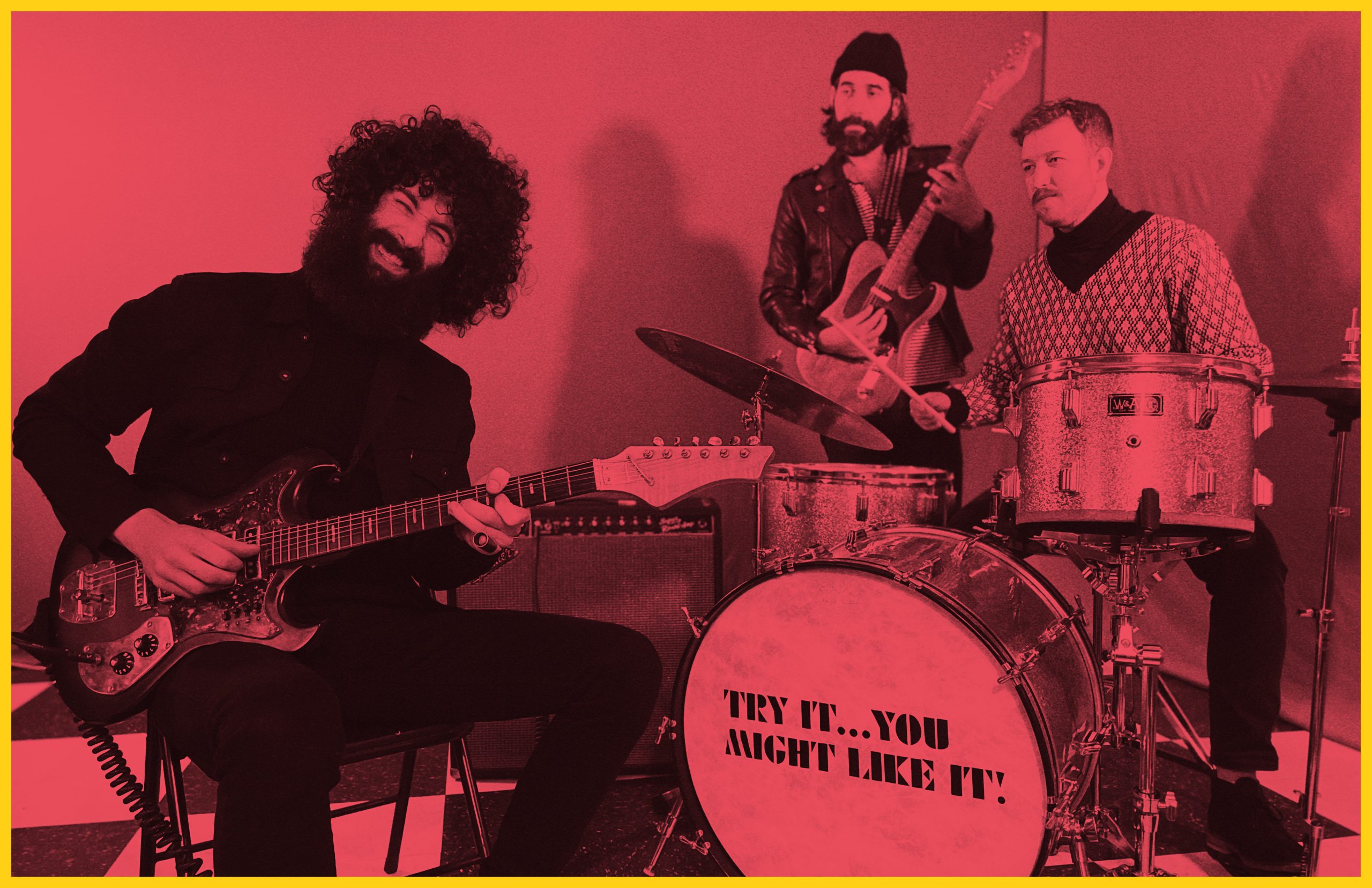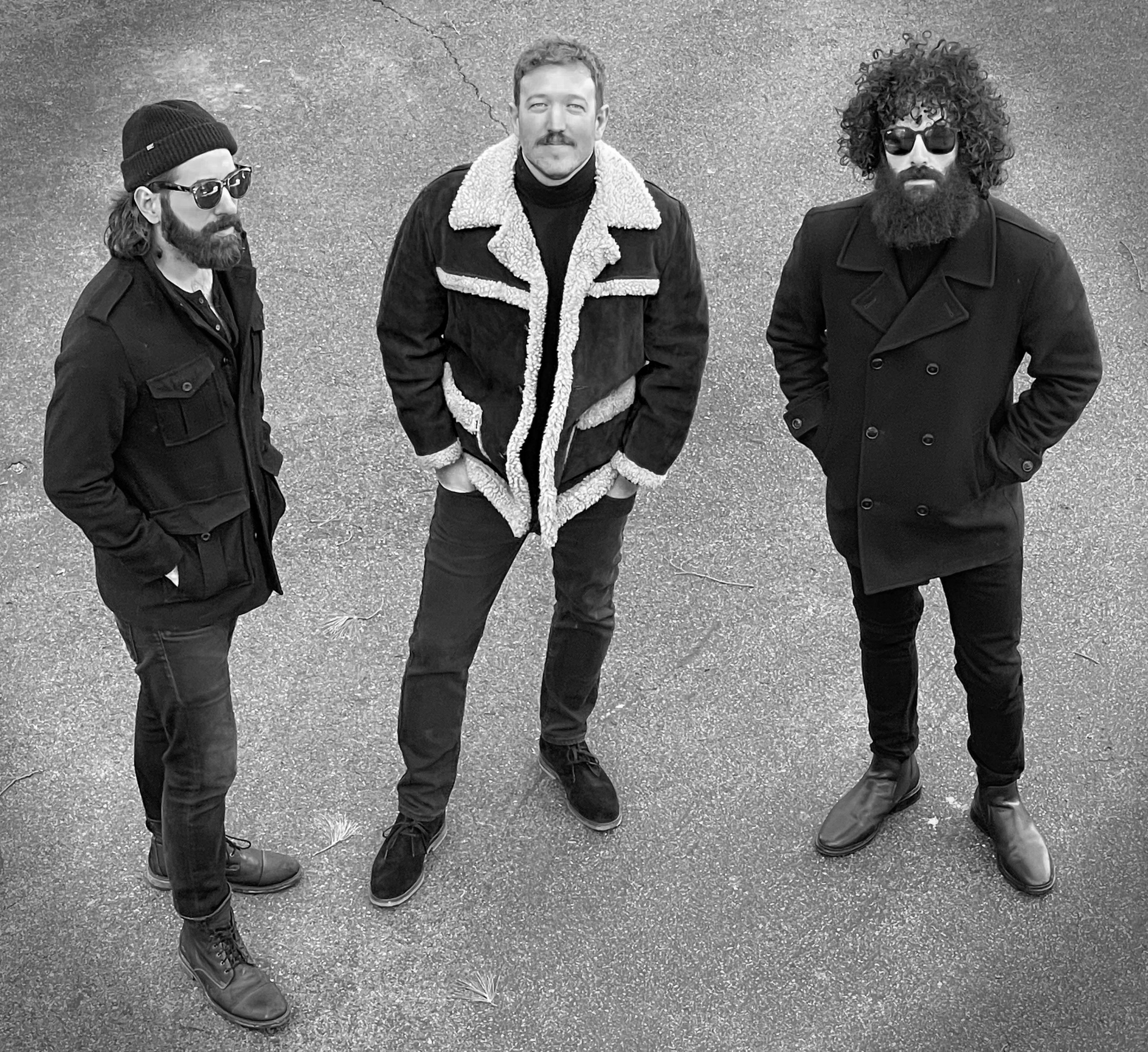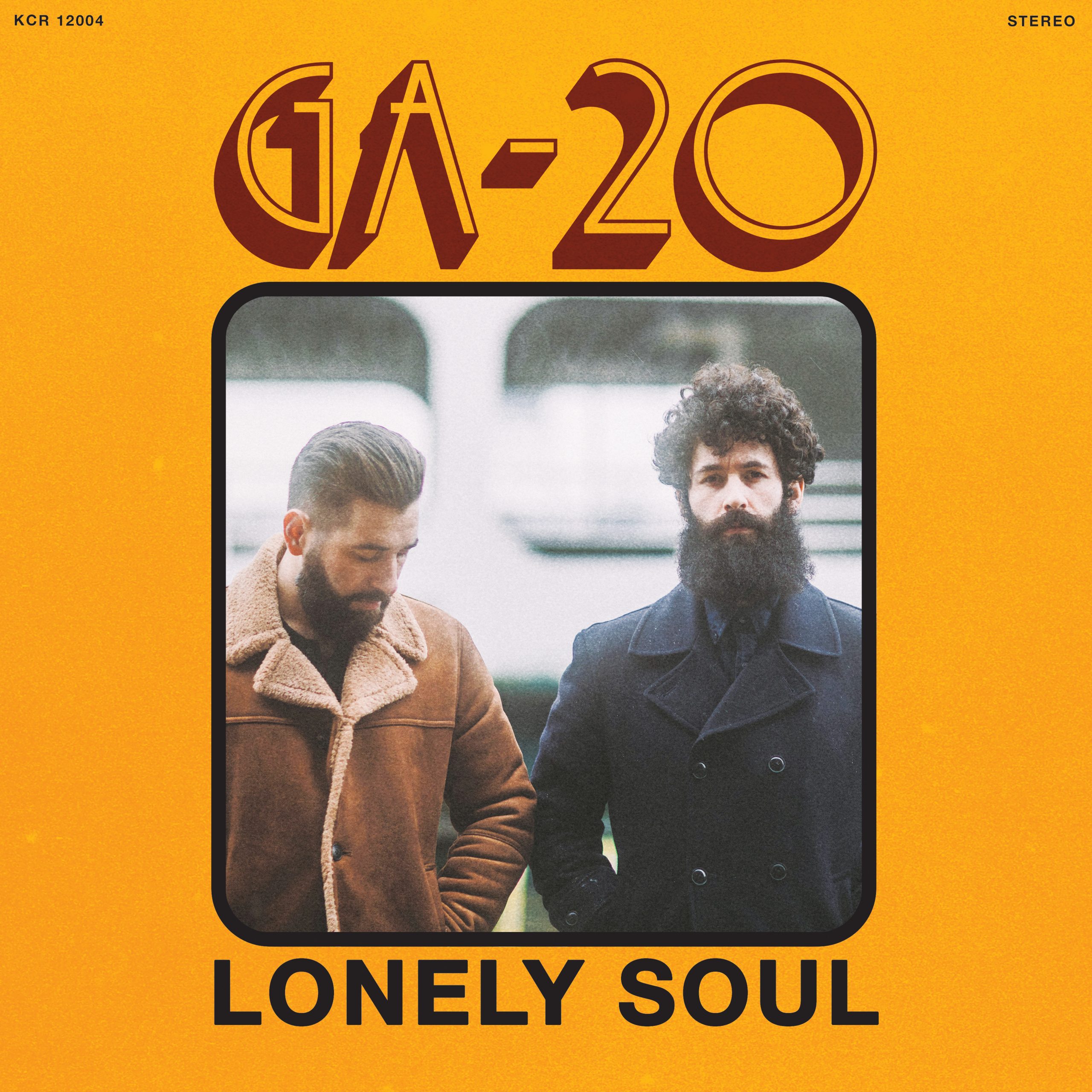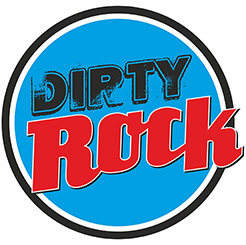
Hailing from Boston (Massachusetts) and Providence (Rhode Island), GA-20 is fresh off the plane and ready to tour Europe. The 3-piece blues band, made up of Matt Stubbs, guitarist and co-founder of the band, guitarist-vocalist Pat Faherty and drummer Tim Carman, were nice enough to put their jet lag aside and sit down with us at Dirty Rock to talk a little about their music and their touring.
You can find the (audio) interview on YouTube, but here’s the transcript in case you’re interested in finding out who said what:
Jessica: Hi, everybody. Dirty Rock here with Matt Stubbs, Pat Faherty and Tim Carman from GA-20, who are about to start their tour here in Spain and will be touring Europe for the next few weeks. Their latest album, ‘Try It…You Might Like It!’, is a tribute to 12-fingered Chicago bluesman, Theodore Roosevelt ‘Hound Dog’ Taylor to mark the 50th anniversary of the release of Hound Dog’s debut with Alligator Records in 1971.
First of all, thanks for joining me. I wanted to start out talking about the new album.
When recording covers, some artists try to be as loyal as possible to the original. Others put such a big spin on their version that you can barely recognize the original song. Take for example your newest single, ‘Jolene’ – you guys made it your own… It’s slower, the guitars sound great and it has a real GA-20 straightforward vibe. Then if we look at ‘Try It…You Might Like It!’, you’ve really captured the raw, “live” spirit of Hound Dog’s first two records, with the 10 bar turnarounds, the distortion, the guitars playing the bass lines… but, your tracks in this new album are more loyal to the originals.
What’s your approach when covering songs? Why was your ‘Jolene’ so different than Dolly’s version for example, but your Hound Dog covers so true to the originals?
Matt: Well, with Hound Dog, we approached recording it very similarly to how Hound Dog and the band did it. We set up the band live in a room with minimal mics and we all worked out the songs. We wanted to get pretty close; we knew it wouldn’t be exact, because Pat obviously has a different voice than Hound Dog’s and so it was going to sound like us no matter what we did, I think. But, production-wise, we were really shooting for that. The Dolly song was during the pandemic and we were actually making a couple live videos for our record label for promotion and if I remember correctly I think we picked that song like a week before. And we said, let’s just kind of do it a little different and Pat was listening to some RL Burnside stuff. We just kind of approached it like that, as a slower version. There’s also a famous arrangement of the original ‘Jolene’, but they slow it down and it’s a little more at that tempo. It was leaked later on YouTube, so you can hear it.
Pat: They put the vinyl on 33 rpm instead of 45.
Jessica: Yes, that’s what I thought about when I heard your version. And is there anything tricky about covering Hound Dog? Apart from not having that sixth finger?
Pat. Oh yeah.
Jessica: What was so hard about it?
Pat: His rhythmic phrasing. I wouldn’t say herky-jerky, but it’s not intuitive. That’s what I had to delve deep into. And that’s my personal take on covers, whether you’re diverting from the original or you’re trying to be true to it, you’re right, there’s a certain spectrum of people who kind of like to cookie cutter, copy and paste vs. way out there and totally different. So, you can kind of tell whether they’ve done their homework on it. So, even though the Jolene cover is way different than the original and the Hound Dog cover is more geared towards what he actually sounded like, the general idea is whether or not we did the homework getting the sound right.
Jessica: And Tim, the drums seem really straightforward, was that tricky for you?
Tim: Well, I definitely spent a lot of time studying Ted Harvey’s little nuances that he used when he played. He would do cymbal flutters and stuff like that. I didn’t view his playing as straightforward because he really interacts a lot with the vocal lines, so I focused on that. At the end of the day, we did our homework and when we recorded it, in some ways, we put our own spins of each of the parts, I think.
Jessica: You’re covering some songs that are eternal. The Blues is eternal, but these days, there doesn’t seem to be a lot of interest in traditional blues and it’s hard to get some people to warm up to it. How would you explain what’s so great about GA-20’s music to someone new to the blues? What’s so special about the blues from the 50s and early 60s? A lot of people would say it’s just 12 bars and a pentatonic scale…
Matt: I think a lot of people are just not familiar with that style of blues, from the 50s and 60s. These days, when you think of the blues, you think of blues-rock, with a lot of extended guitar shredding, a band playing just to support a guitar player who’s playing long solos, it’s not so song based. All the blues I’ve ever listened to is typically shorter songs and song-based. It’s about melody or a story. I think it’s not that people don’t like it, it’s just that they’re not familiar with it, so hopefully they can get familiar with it through us.
Jessica: Are you trying to bring people closer to that then?
Pat: Yeah. My own take, as you said, is that people think it’s just 12 bars. And that’s the problem. A lot of the songs that people are playing nowadays, if you look at a random cover band, they’re all 12 bars, but if you look back at the catalogue, a lot of them weren’t. That’s because they were melody-driven. People tend to misinterpret it and say, ‘Oh, they did a bar of 13 and a half’, and that’s not what it is. So, people are missing out when they condense it into 12 bars and they don’t get the looseness and the freedom that the old style had.
Jessica: But even with Hound Dog, he didn’t use the typical 12 bars and you can feel it. Right?
Pat: Exactly and that’s the melody. The melody just ends at that point so the band just flips with it.
Tim: Yeah, we spent a lot of time working on getting that to feel natural.
Jessica: Well it definitely did. You guys seem to love your vintage gear, in fact the name GA20 comes from an amp that Gibson made for Les Paul guitars in the 50s (close to my hometown in Kalamazoo, Michigan). Did you use the same setup as Hound Dog used when you were recording?
Matt: Similar, not the same. We recorded it at my house, actually in a small studio. Hound Dog and the band used bigger amps. They were pretty loud so it wouldn’t have worked in our small space. The guitars would have been way louder than the drums. We used similar ones. Pat ended up buying a small Silverstone amp, only about 5 amps, whereas I think Hound Dog’s was probably 80 watts, but it was from the same year, same brand, a Silverstone. And then I used a small Fender amp rather than a big one, I believe it was a Concert amp, if I remember correctly. And Tim used one like what Harvey used.
Tim: It was just one tom and one riser, it was like 19 inches. We looked at photos and were trying to figure it out, saying “I I think that looks like a 19 inch cymbal… or a 20 inch, maybe…”
Pat: We really spent a lot of time trying to figure it out.
Jessica: So you really did do your homework. But you recorded it really quickly, right?
Matt: In two days. Although we spent a lot of time getting together.
Tim: We did a lot of prep work.
Matt: Once or twice a week, we’d get together during a couple months, but the actual session was maybe two or three takes for each song. Live. Guitar-wise, Pat bought 4 or 5 different vintage Teiscos or Kingstons because they’re what Hound Dog used. All kinds of different names. We had those for about a month or two. So he’d buy one to find out which one sounded closest to that tone.
Pat: And down to the wire, the guitar we actually used… There was one that I got well in advance, but the one I used in the ‘She’s Gone’ video showed up about 3 days before we recorded, so I lucked out on that one.
Jessica: Well it sounded great. The thing is that you can’t bring all your vintage gear on tour with you. Your old-school sound of in part due to your setup. Do you think that GA-20 would sound any different if we caught one of your shows back home compared to one of your European gigs?
Matt: No, maybe just a little bit, but no. Actually, Pat brought two of his vintage guitars and I brought a newer one, but it’s very similar, a reissue. Funny story, actually. On the first flight here, we were flying from Boston to Philly for this trip yesterday and we weren’t checking our guitars. We wanted to carry them on, and thought that if we had to check them, we’d just check them at the gate. It seemed like the safest way. So the gate checked them and we took off on a one hour flight and they disappeared. It took about an hour and a half to track them down. They had sent them to a different gate. They were just supposed to come right off the plane. So, that Hound Dog guitar story we were just talking about – it was just gone. So yeah, he has really good guitars.
Jessica: Oh my! At least it was a different gate and not a different city… That must be the hard part about traveling and worrying about your babies.

Jessica: GA-20 is a three piece, like a lot of traditional blues ensembles back in the day, which means you have no bass. I understand that you use tweed amps for distortion and other tricks to add that low end… Have you ever thought about using bass guitar hybrids that are becoming popular? Or seven-string guitars to add that weight to low-end riffs or reversing the headstock like some musicians do?
Pat: Oh, I’m not familiar with the headstock trick.
Jessica: I’ve seen them with the Strats for example, and it makes the sound darker and the [low] E sounds a little bit cleaner because of the string stretching…
Matt/Pat: Interesting. I’ve never heard of that, we should try that.
Matt: We have a couple songs that we tune down on the guitar to a lower key on the Hound Dog stuff and then maybe on one or two other tunes. Once in a while – we don’t do it while we’re on tour or flying around to because it would just be another guitar to bring – but I’ll play baritone guitar. It’s lower than a guitar but not as a low as a bass. On that ‘Jolene’ song, when it almost sounds like a bass, it’s a baritone guitar.
Jessica: But it’s not a four string?
Matt: Nope, it’s a 6 string, and you play it like a guitar.
Pat/Tim: On Whale [Has Swallowed Me] you use it, too.
Matt: Yeah, that’s right, but no bass guitar on the horizon for us.
Jessica: I have a question about touring with Charlie Musselwhite, Matt. He’s one of the greats. He was friends with Muddy Waters, Earl Hooker, Little Walter… You’ve played with so many greats. Are there any tips they gave you or lessons you learned from them that really stuck with you?
Matt: Charlie didn’t tell you too much as a side musician. I probably didn’t feel comfortable with that gig for about a year because I wasn’t sure what he wanted. He had a couple little tips but most of the time you just had to use your ears and play behind him and listen to the records. And he’s a master story teller so all you he’s doing on the road is telling stories. So, basically you’re just paying attention, listening to what guys he liked and different players that he talked about that I might not have been familiar with. So I’d go and listen to them. And to his band. June Core has been the drummer since I’ve been in the band and he’s played with everybody as well, so he had a lot of tips throughout the years, so basically, just shutting up and trying to learn.
Jessica: Like a master class. Tim and Pat, what do you think that someone would say about touring with GA-20 and the three of you? Any interesting stories they might be able to tell? Or lessons they could learn from you guys?
Tim: From being on the road with us? We’ve got lots of stories, I don’t even know where to begin with that one. (laughter)
Pat: Ask for a receipt. That’s the number one lesson. (laughter)
Jessica: Other lessons learned from you guys? For someone who’s new to playing blues who hasn’t toured very much?
Tim: You’ve got to grind. Thankfully Matt is so good at getting shows. We put a lot of time in on the road. Basically, say yes to everything.
Matt: At first, yes.
Pat: Play and play, as much as possible…

Jessica: You guys have been on the road for a long time. I recently read something. I love jazz. McCoy Turner was talking about how when you’re up on stage, you can’t just think about yourself and your music. You have to communicate with the audience and listen to and it ends up enhancing your music. I’m sure you guys do a lot of that, listen to your fans and the feedback that you get. I understand that you have a stockpile of new recordings that you are going to put out soon. I don’t know if they’re ready or not yet, but do you ever think about going back to those songs and changing them before putting them out because of all this feedback you’re getting and these life experiences from touring?
Matt: It’d be hard to do because they’re all done and recorded. (laughter) Some of them we’ve already been playing live. We have a new record that will be coming out late summer or early fall, I think. It got pushed back a little. There are a handful of songs that we haven’t been playing. And I’m not sure, maybe we’ll bring them back because it’s been a year or two since we’ve played them.
Tim: I think that it’s interesting how the songs evolve as you play them on the road. If you listen again to the original recording and you realize “Wow, we play that a lot faster back now.” “Or a lot slower now.” And it kind of turns into its own thing. Which I think is a good thing because we are responding to the crowd and what they’re reacting to.

Jessica: Do you like touring?
All: Oh yeah.
Jessica: What’s the best thing about touring, apart from being on the road and getting out and seeing things?
Matt: I like that the focus is just on playing music the whole day. I mean, you wake up, you drive, driving to play a gig. There are no distractions. I don’t like a lot of distractions, so it’s nice.
Pat: Yeah, it’s a pretty straightforward routine. You know what you’re going to be doing. It’s the uncertainty that gets you.
Tim: It’s also cool to play the same set or a similar set every night and really polish it. It’s crazy how tight you can get as a band when you’re just playing that much.
Jessica: It’s like schooling. You’re on tour now to promote this new album, but it’s not your first recording. Your debut album ‘Lonely Soul’ actually included a single, ‘Naggin’ On My Mind’ that featured Charlie Musselwhite and Luther Dickinson. Was there any specific reason that you chose those two legends to record with you?
Matt: Well, we wanted a harmonica on it and Charlie was the best one I could think of. To play with him was pretty easy. We just asked him and he said yes. And with Luther, it was before Pat played slide and I don’t really play slide but we wanted a slide guitar on it. I had been buddies with Luther through the years, playing shows with Charlie’s band North Missisissippi All Stars, so it was just one of those things where it was a brand new band and we were trying to get some different people on it.
Jessica: Tim, this is your first European tour with GA-20, right?
Matt/Pat: It’s GA-20’s first European tour all together.
Jessica: What are you looking forward to on this tour?
Tim: I just love coming to Europe and exploring different cities I’ve never been to and meeting different people and eating different food. I’m a big food person…
Jessica: I saw you guys ate some pig ear today.
Tim: Yeah, that was Pat.
Jessica: You are brave. (laughter)
Pat: Brave, why?
Jessica: Oh it’s one of those things that I just can’t stomach.
Tim: He’s had like two plates of it already. (laughter)
Jessica: Anything you can tell us about the music that we can expect from you later on this year?
Matt: So it’s another studio record and more of a follow-up to ‘Lonely Soul’. It was actually recorded before the Hound Dog record but when everything shut down, we put it on hold because we wanted to tour behind it. It’s still blues, for sure.
Jessica: Well, I’m looking forward to it. That’s all the time we have for today. Thank you guys for taking the time out of your busy schedules to sit down with us at Dirty Rock. I’ll be there on Thursday to see you in Madrid. Good luck with all your new music and the rest of your tour, and tomorrow in Valencia.
All: Thank you very much.
You can find out more about GA-20 on their website. Also, check them out on Spotify, Facebook, Instagram and be sure to go see them on tour. Meanwhile, click here to get your own copy of their music.
Interview and transcript: Jessica Jacobsen

